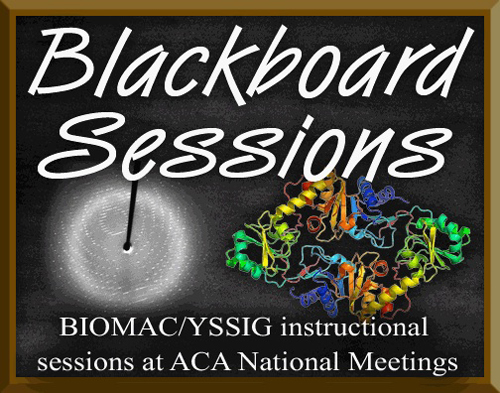

These "Blackboard Sessions" are a unique educational opportunity for novice to advanced-intermediate macromolecular X-ray
crystallographers. The sessions endeavor to provide a 'hybrid' experience somewhere between purely spoken talks and a workshop by incorporating hands-on narrative or highly practical demonstration with data and software made available to the user community. For example, during the two inaugural 2011 Blackboard Sessions, raw diffraction images comprising several datasets with various pathologies were made available online in advance of the national meeting. ACA members could download the data and free versions of all the software to experiment working with the data. At the meeting, the authors of popular data processing and structure phasing/refinement software programs demonstrated their approach to handle the various datasets and made step-by-step notes, log files and processed files available for the audience to compare with their own attempts.
Future Blackboard Sessions will have a similar emphasis on providing a hands-on opportunity for the audience to learn about pertinent topics in the field of X-ray crystallography. All sessions will be kept as a permanent resource available online. Thanks to James Holton for his critical support in this regard.
Links to the 2011 Sessions, their descriptions and associated files:
08.15: Data Processing With The Pros (DPWTP) Session
08.19: Phasing And Refinement For Dummies: No Book Required (PARFD) Session
Links to the 2012 Session, its description and associated files:
13.23: Data Collection With The Pros (DCWTP) Session
Links to the 2013 Session and its description:
13.05: Model Validation and 'Healing' Session
Links to the 2014 Session, its description and associated files:
2.1.3: Data Processing With The Pros RELOADED (DPWTP) Session Coming Soon
Updates Section (NEW!):
Here is a list of updates to the website so you can easily find the most-recently added functionality: